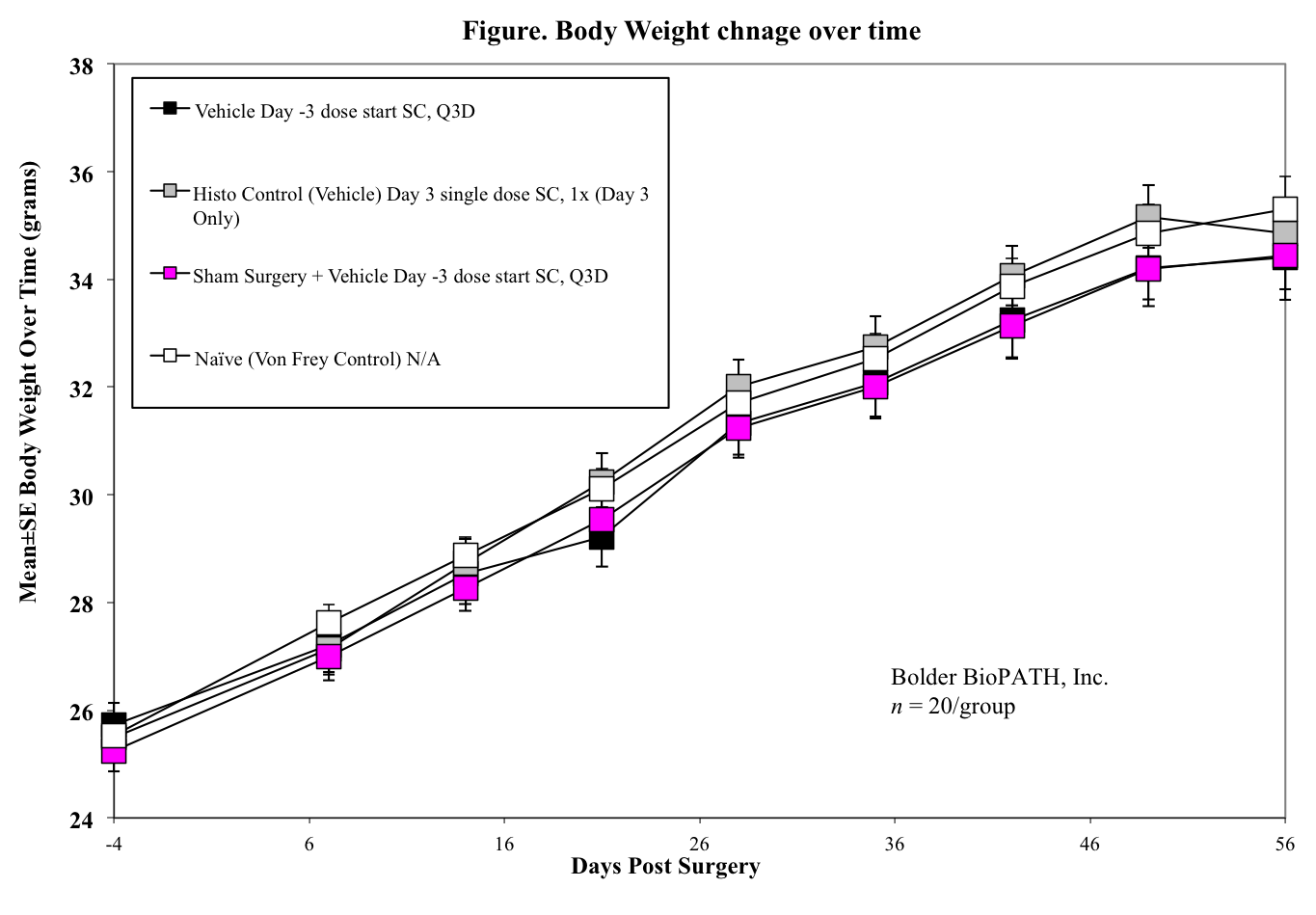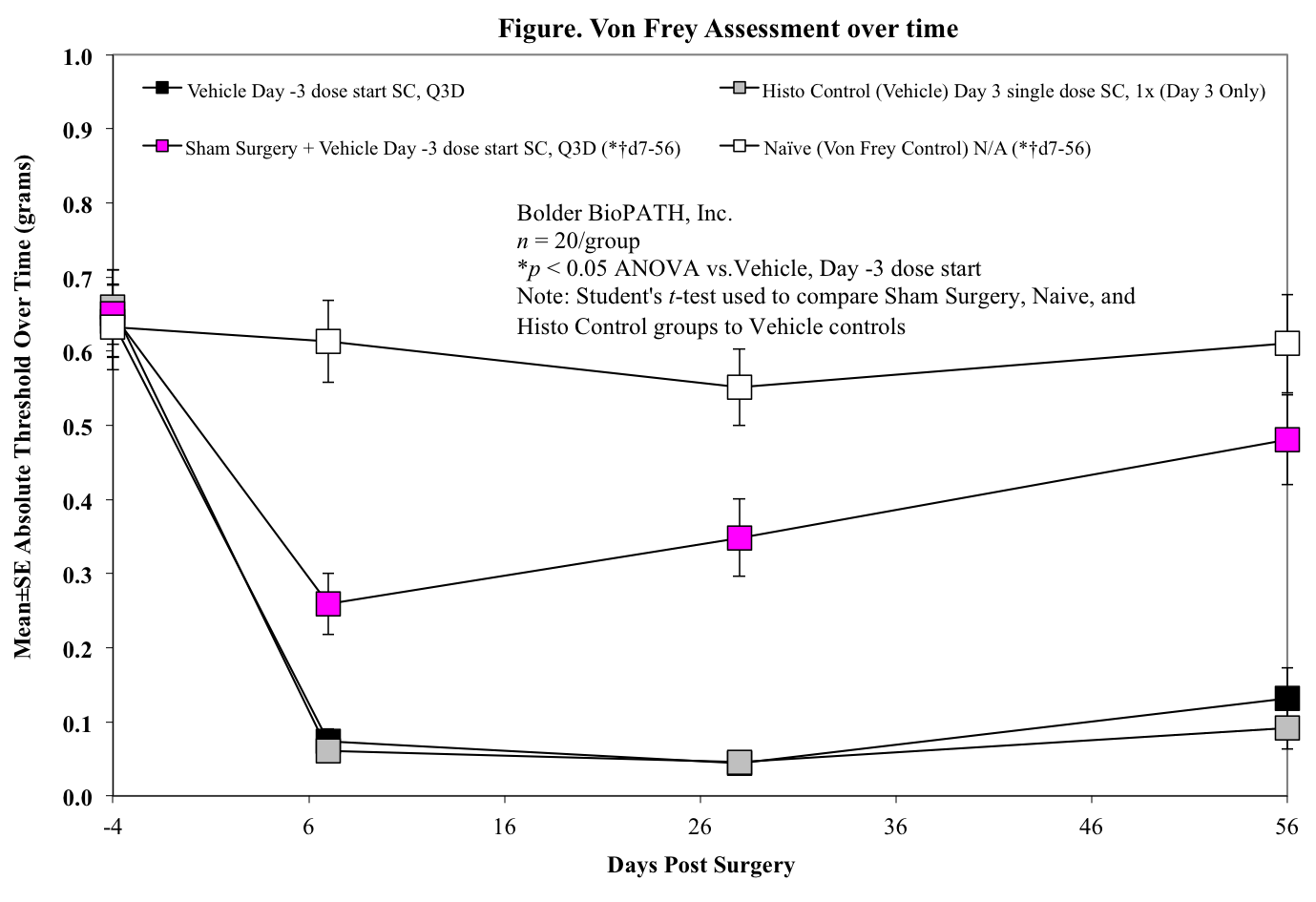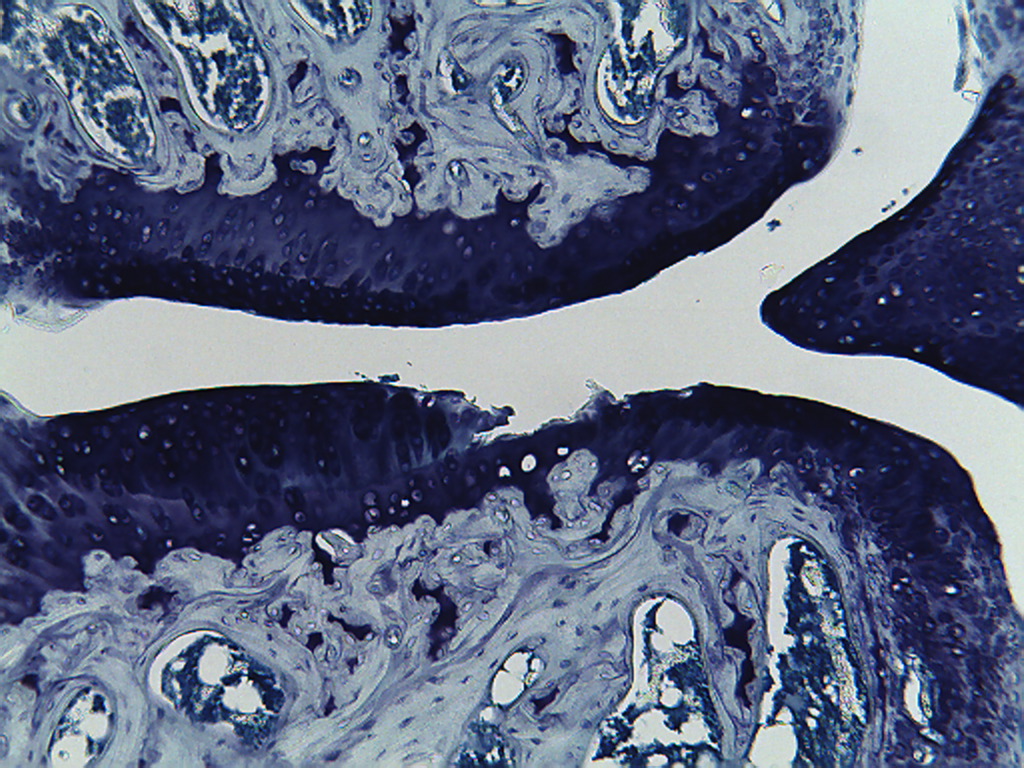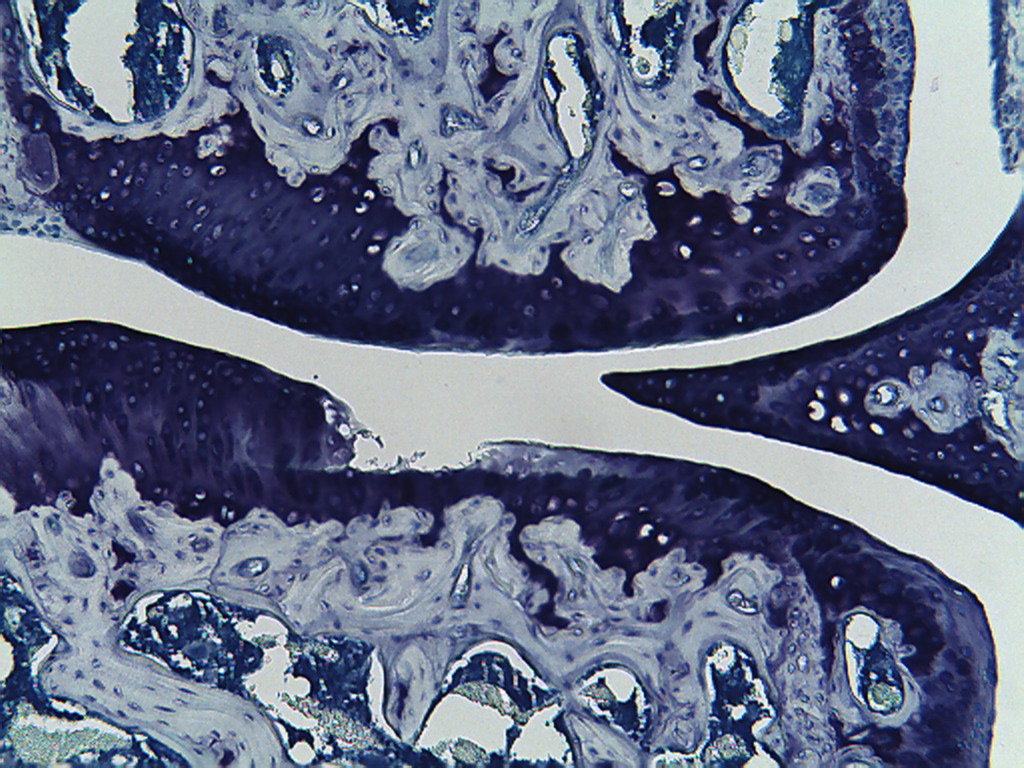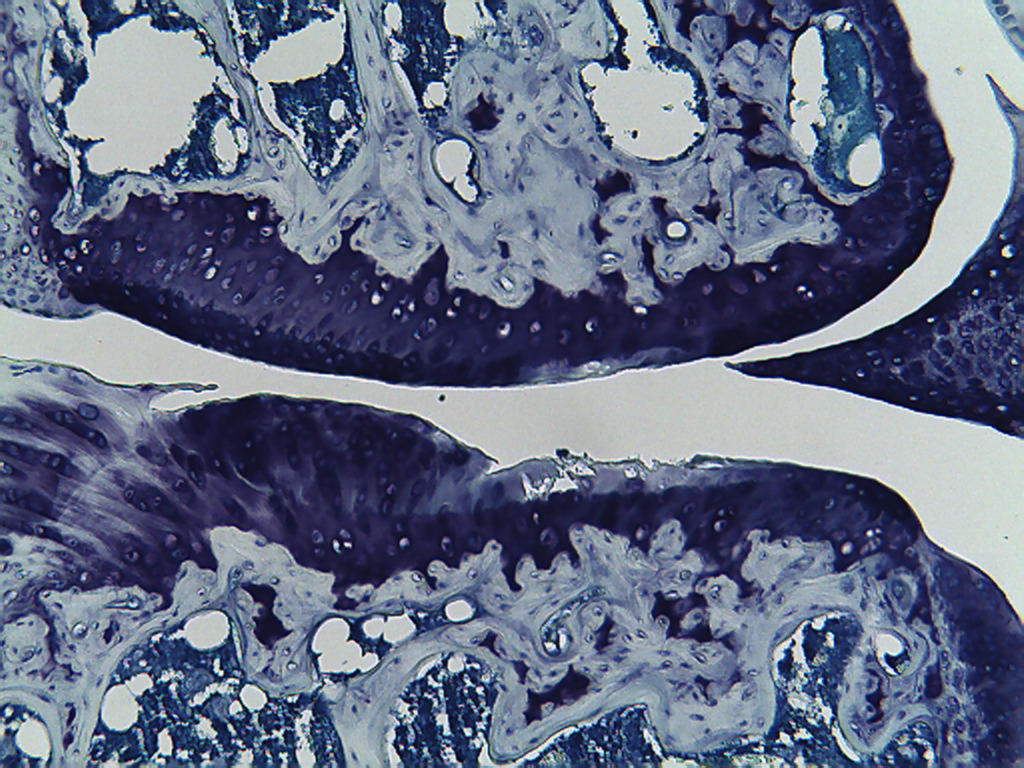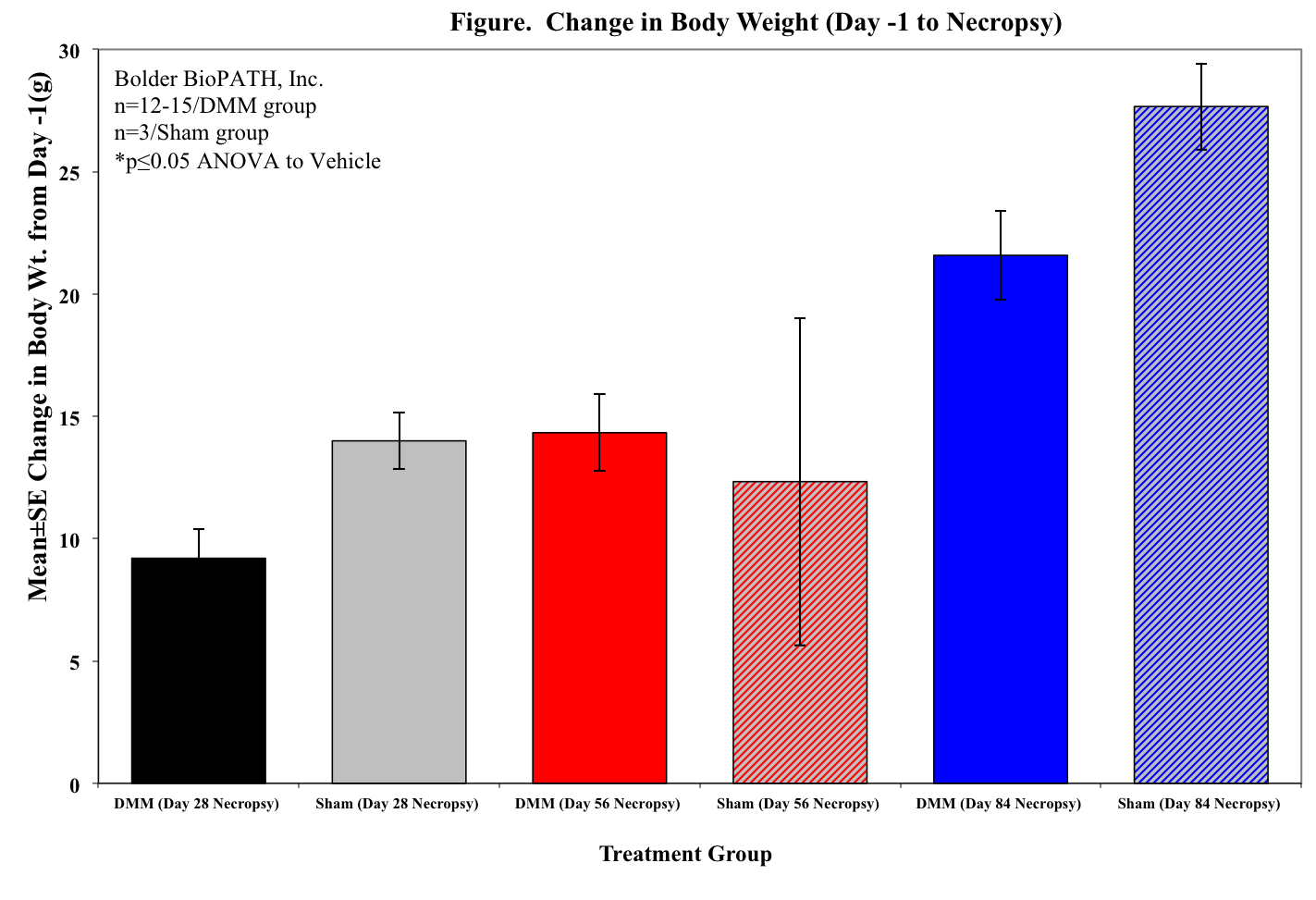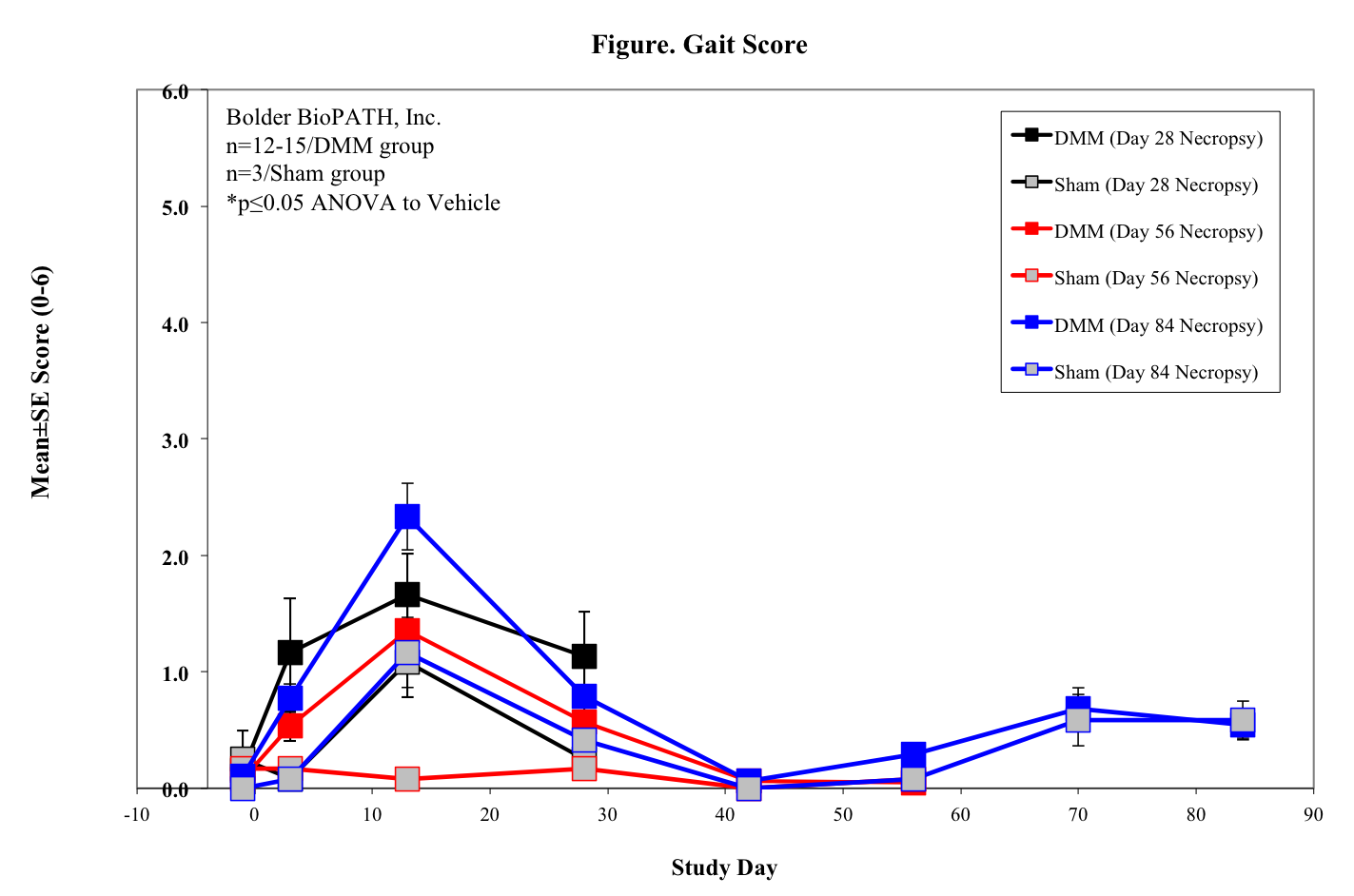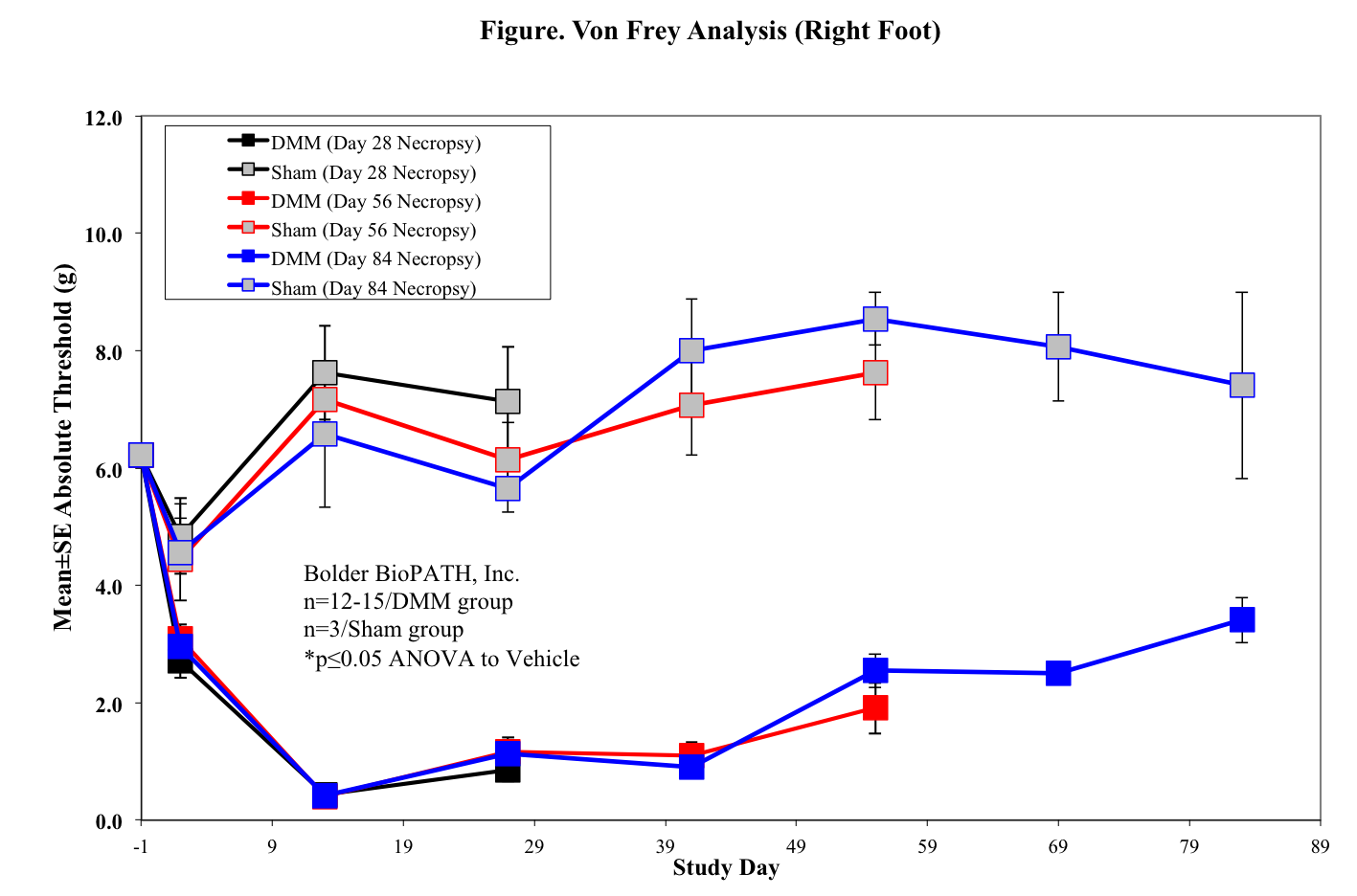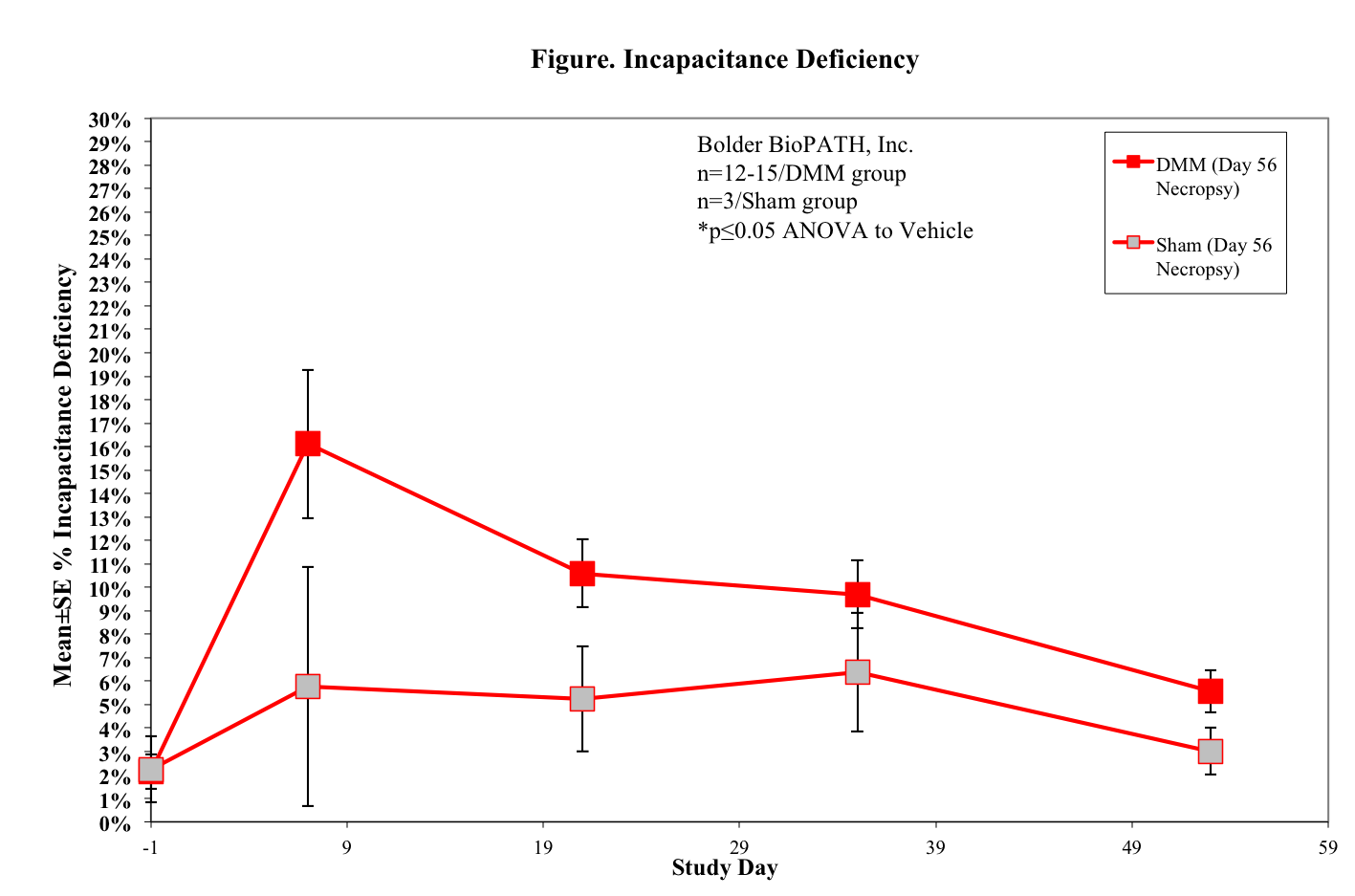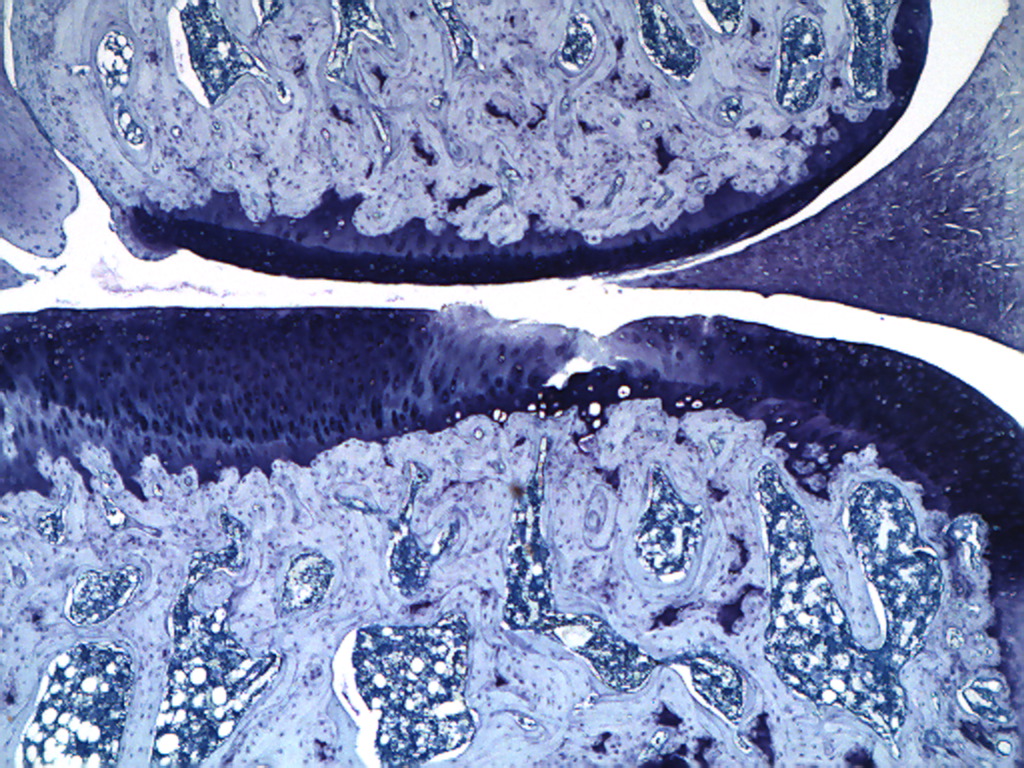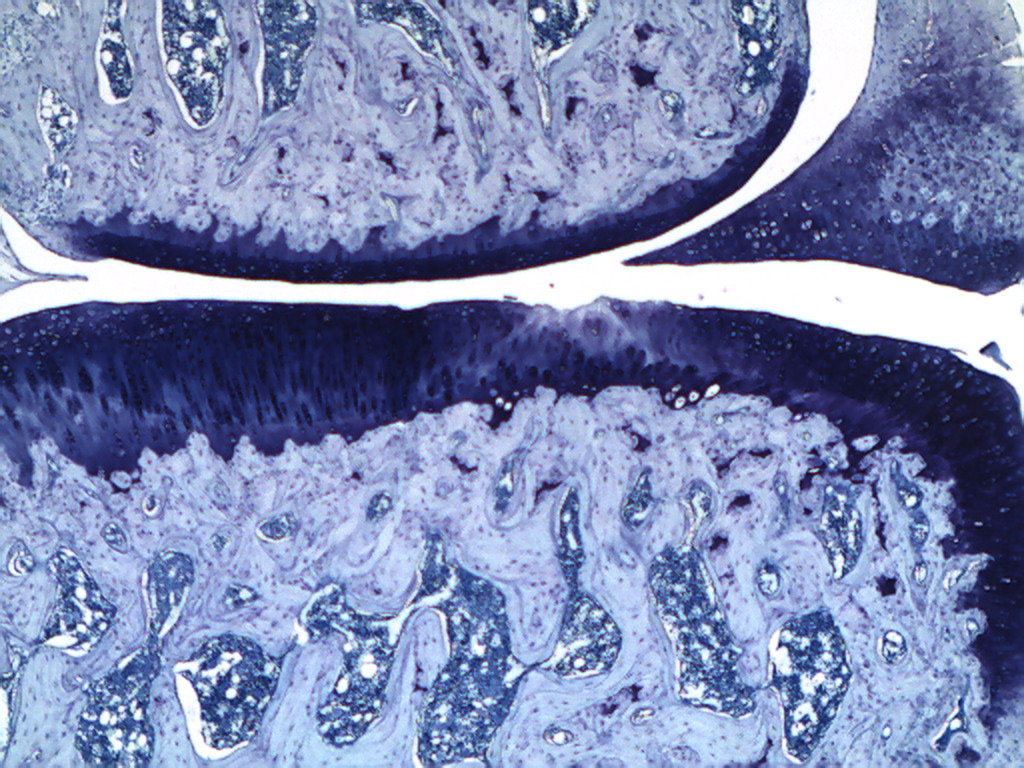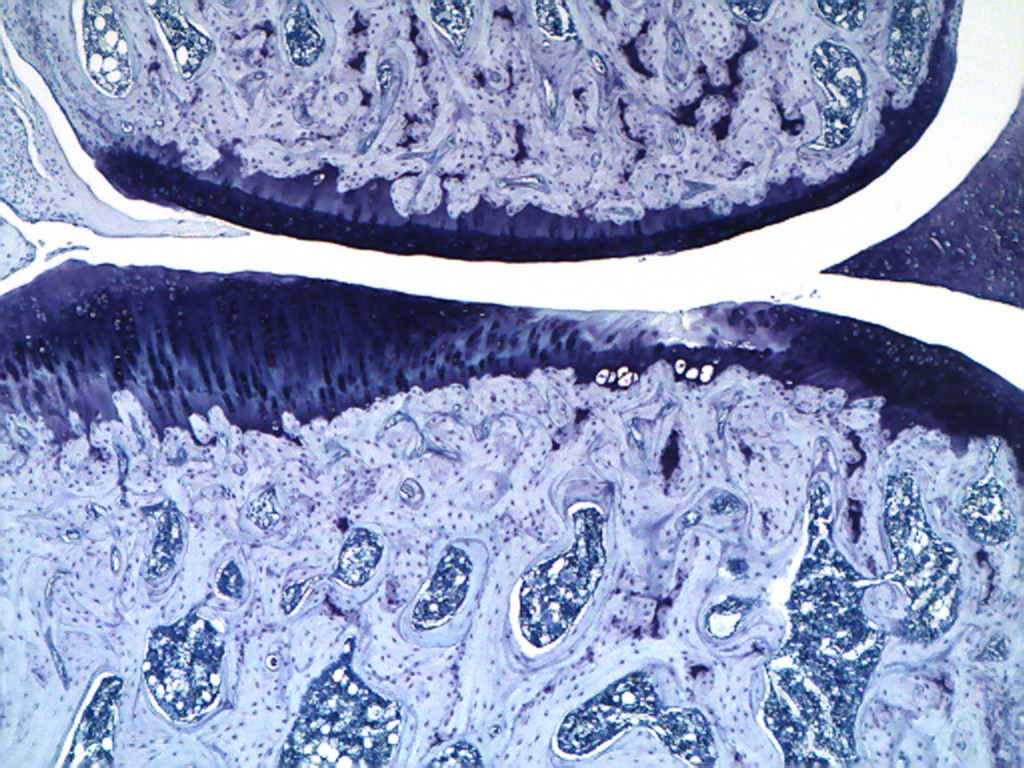Destabilization of the Medial Meniscus (DMM) in Rats & Mice

Overview:
Of the major microsurgery models, DMM has been shown to be more reliable than ACL transection, which induces excessively severe lesions with much greater variability, as well as having a greater risk of iatrogenic injury2.
Induction of DMM:
Animals (mice or rats) are anesthetized with Isoflurane and the right knee area and lower leg are prepared for surgery. For the surgical destabilization of the medial meniscus (DMM), a skin incision is made from the distal patella to the proximal tibial plateau. The joint capsule immediately medial to the patellar tendon is incised and spread open with scissors. The patellar tendon is retracted and the cranial meniscotibial ligament of the medial meniscus (MMTL) is exposed by blunt dissection of the fat pad. The MMTL is sectioned using a micro-surgical knife or #11 blade, then the wound is closed cutaneously with 7-0 Vicryl.
Disease Parameters:
Destabilization of the medial meniscus induces mild to moderate osteoarthritis lesions in the central weight bearing area of the medial femoral condyle and medial tibial plateau. Lesions are evident as early as two weeks post-surgery and increase in severity over time.1
Dosing Paradigms:
- Begin dosing X days prior to surgery or post surgery and continue until necropsy on day 56.
- Route of administration: SC, PO, IP, IV
Clinical Assessment:
Animal body weights are measured weekly. Tactile allodynia and Gait analysis can be evaluated at multiple time-points.
Histopathological Assessment:
Knee joints are sectioned at the approximate mid point of the frontal plane and stained with Toluidine blue. Each of the four surfaces of the knee (medial tibial plateau, medial femoral condyle, lateral tibial plateau, lateral femoral condyle) are evaluated according to these methods.
Sample Data (Click on image to enlarge):
Mouse Clinical
Mouse Histopathology
Rat Clinical
Rat Histopathology
For additional examples of positive controls, please contact us.
Notes:
Of the major microsurgery models, DMM has been shown to be more reliable than ACL transection, which induces excessively severe lesions with much greater variability, as well as having a greater risk of iatrogenic injury.2
Optional Endpoint
- PK/PD blood collections
- Cytokine/chemokine analysis via Luminex(R)
- Other sandwich ELISAs
- CBC/clinical chemistry analysis
- Soft tissue collection
- Histopathologic analysis
- Immunohistochemistry analysis
References
- Ma H-L, Blanchet TJ, Hopkins B, Morris EA, Glasson SS. Osteoarthritis severity is sex-dependent in a surgical mouse model. Osteoarthritis Cartilage 2007; 15: 695-700.
- Glasson SS, Blanchet TJ, Morris EA. The surgical destabilization of the medial meniscus (DMM) model of osteoarthritis in the 129/SvEv mouse. Osteoarthritis Cartilage 2007, Sep;15 (9):1061-9.
Related Pages
- Partial Medial Meniscectomy-Induced Arthritis in Canine
- ACL Transection-Induced Arthritis in Canine
- Medial Meniscal Tear-Induced OA (MMT) in Rats
- Monoiodoacetate-Induced Arthritis (MIA) in Rats
- Destabilization Of The Medial Meniscus (DMM) in Rats & Mice
- Partial Lateral Meniscectomy Induced OA in Rabbits
- Spontaneous Osteoarthritis in Guinea Pigs
- Meniscal Tear-Induced Arthritis in Guinea Pigs
